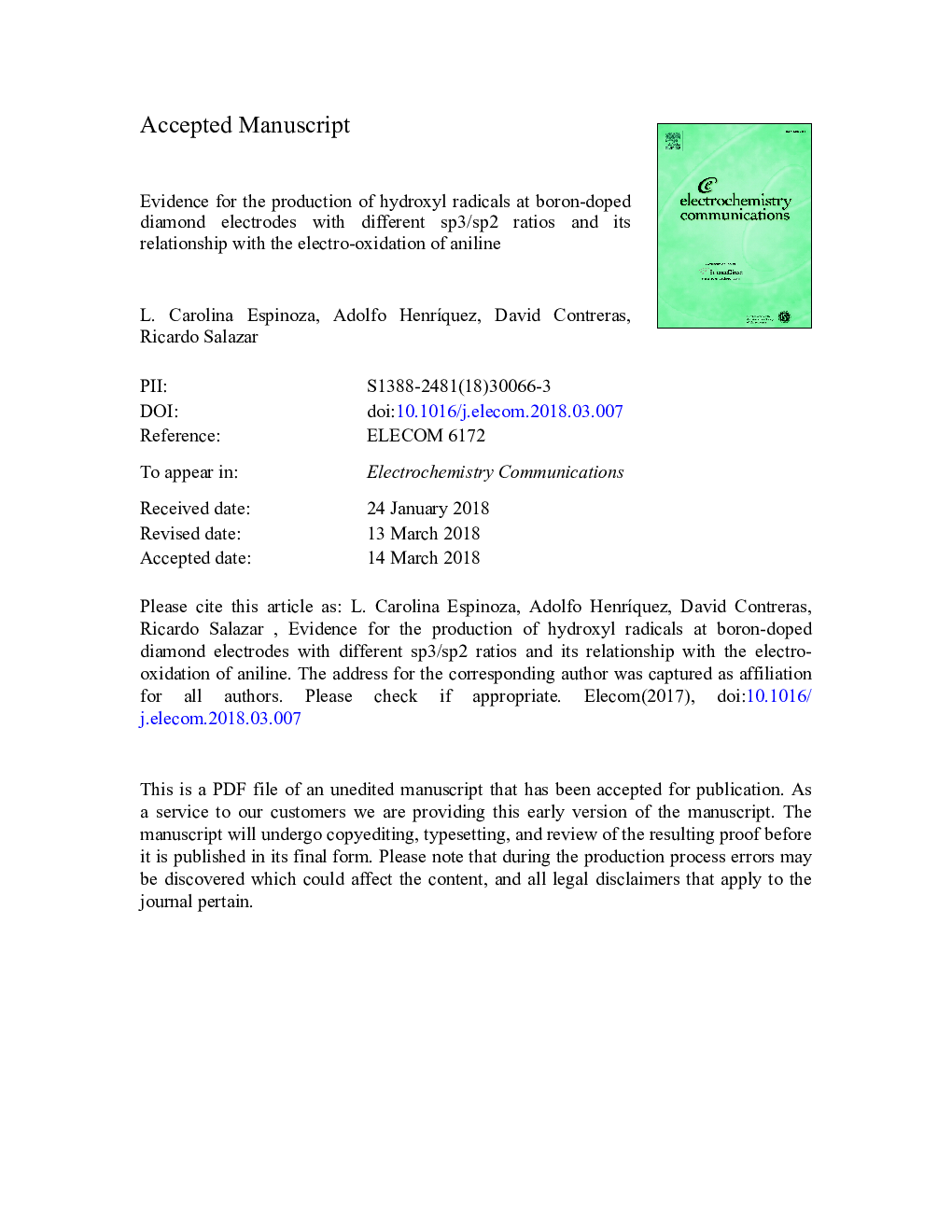| Article ID | Journal | Published Year | Pages | File Type |
|---|---|---|---|---|
| 6600800 | Electrochemistry Communications | 2018 | 19 Pages |
Abstract
In this work, the electrochemical production of hydroxyl radicals on boron-doped diamond (BDD) electrodes with different sp3/sp2 ratios was studied, together with the relationship between the level of production of hydroxyl radicals and the degradation and mineralization of aniline, taken as a model organic compound. A higher sp3/sp2 ratio on the BDD surface produces a greater number of hydroxyl radicals, as previously stated; however, for the first time the difference in the production of hydroxyl radicals for different levels of sp2-impurities on BDD surface was established and its importance in determining the nature of the BDD surface (semi-active or inactive) is demonstrated. The results are of great relevance in interpreting the real effect of conductive diamond electrochemical oxidation on the treatment of organic wastes described in the literature.
Related Topics
Physical Sciences and Engineering
Chemical Engineering
Chemical Engineering (General)
Authors
L. Carolina Espinoza, Adolfo HenrÃquez, David Contreras, Ricardo Salazar,
